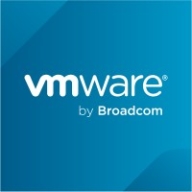

VMware Carbon Black Endpoint and Varonis Platform compete in the cybersecurity space, specifically in endpoint protection and data security. VMware Carbon Black appears stronger in active threat response, while Varonis excels in data security and compliance management.
Features: VMware Carbon Black Endpoint offers cloud-based triage, easy deployment, and dynamic grouping capabilities for managing endpoint security. It also provides robust threat analysis and uses minimal resources, remaining almost invisible to end users. In contrast, Varonis Platform focuses on comprehensive data governance and security with strong data analysis features to monitor data access and protect sensitive information across environments.
Room for Improvement: VMware Carbon Black needs to improve EDR performance, alert-reporting features, and cloud console response times. Enhancements in on-premise integration and mobile device defense are also suggested. Varonis Platform could benefit from better integration of on-premise and cloud systems, enhanced DLP functionality, improved remediation processes, licensing flexibility, and reduced setup costs. Varonis should also modernize its interface.
Ease of Deployment and Customer Service: VMware Carbon Black Endpoint offers various deployment models, including private and hybrid cloud, but has faced technical support responsiveness issues. There is a need for more proactive support engagement. Varonis Platform, known for on-premises use, offers responsive customer service, especially during initial setups, but could improve support accessibility and communication clarity. Carbon Black's community portal is highly regarded, whereas Varonis may provide quicker technical support response times.
Pricing and ROI: VMware Carbon Black Endpoint is considered expensive, with licensing based on endpoints, though it provides ROI by reducing incidents. Varonis Platform's high licensing cost, due to module-based pricing, suits larger organizations. Both products have demonstrated ROI in security enhancements. Carbon Black offers a flexible MSSP program and scalable licensing options, while Varonis's additional modules can justify costs through high-level data security.
| Product | Market Share (%) |
|---|---|
| VMware Carbon Black Endpoint | 10.3% |
| Varonis Platform | 2.9% |
| Other | 86.8% |


| Company Size | Count |
|---|---|
| Small Business | 2 |
| Midsize Enterprise | 1 |
| Large Enterprise | 11 |
| Company Size | Count |
|---|---|
| Small Business | 31 |
| Midsize Enterprise | 9 |
| Large Enterprise | 30 |
Varonis Platform enhances data security and governance with advanced analytics, identifying unusual access patterns and sensitive areas. Its centralized interface manages permissions across systems, offering essential capabilities for alerting and reporting.
Varonis Platform provides continuous data protection and monitoring by identifying and alerting on unauthorized data access. It offers comprehensive insights into file access and user activities, supporting data classification and simplifying compliance with tracking and monitoring capabilities. Integration with storage systems enables users to manage permissions and access effectively. Room for improvement includes cloud integration and simplifying its interface and calculation engine for ease of use. Challenges include on-premises dependency, licensing costs, and a need for enhanced DLP capabilities.
What are the primary features of Varonis Platform?
What benefits and ROI should users expect?
In finance, Varonis aids in safeguarding sensitive financial data, while in healthcare, it secures patient records. Legal industries utilize it for protecting client information, and retail sectors manage sensitive customer data. These industries benefit from Varonis' ability to prevent unauthorized access and streamline compliance.
VMware Carbon Black Endpoint enhances endpoint security with its robust EDR, threat detection, and live response features. The cloud-based architecture supports remote management and easy setup while behavioral monitoring and dynamic grouping minimize security risks.
VMware Carbon Black Endpoint is designed for those seeking comprehensive endpoint protection. With its cloud-based deployment, organizations experience streamlined remote control and simplified rollout processes. Its behavioral monitoring, incident response capabilities, and firewall integration deliver advanced security measures. Although it addresses many security challenges, areas like manual alert management, on-demand scanning, and integration with systems like AlienVault USM require refinement. Improved UI, EDR components, and flexible pricing models would enhance user satisfaction. On-premise deployment infrastructure and compatibility issues with some operating systems need attention. Enhanced reporting, container security, and multi-tenancy support are also essential for fulfilling industry needs. AI-driven analysis and threat isolation empower companies by fostering proactive management.
What are the key features of VMware Carbon Black Endpoint?
What benefits should users look for when evaluating VMware Carbon Black Endpoint?
VMware Carbon Black Endpoint finds extensive application in industries focused on stringent security requirements. Managed security service providers leverage its capabilities to deliver comprehensive protection to multiple clients worldwide. Organizations use it primarily for antivirus protection and incident management, integrating it with their existing security frameworks to strengthen endpoint visibility and real-time threat prevention. Its advanced detection and application control features make it a preferred choice in industries that prioritize robust security measures. However, it requires improvements in terms of system compatibility and customization flexibility to better serve diverse industry environments.
We monitor all Ransomware Protection reviews to prevent fraudulent reviews and keep review quality high. We do not post reviews by company employees or direct competitors. We validate each review for authenticity via cross-reference with LinkedIn, and personal follow-up with the reviewer when necessary.